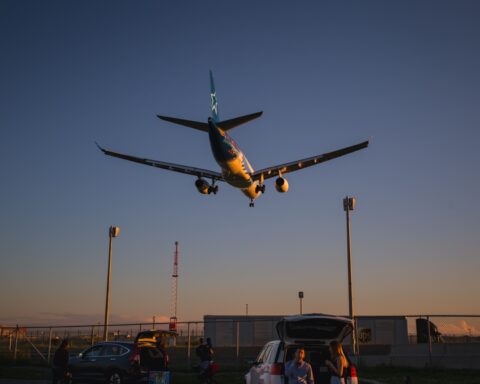The Liberals now enjoy a 36-31 lead nationally over the Conservatives and, perhaps more importantly are now ahead in Ontario, Quebec, and B.C., according to EKOS’ latest poll numbers.
Overall, the national margin of error is 2.9 per cent, with small samples in some provinces the local MOEs range between 5.0 and 8.1 per cent, meaning they should be treated with some caution.
After swapping the lead several times nationally with the Conservatives in the last week, EKOS’ latest three-day rolling sample (October 10 to 12) — based on decided and leaning voters only — has the Liberals in front with 35.6 per cent, the Conservatives right behind at 31.1, and the NDP a distant third at 20.6. The national margin of error is 2.9 per cent.
In large part, the Liberal surge is being driven by a groundswell in Ontario, where Justin Trudeau’s party now has close to a 12-point lead over the Conservatives.
In large part, the Liberal surge is being driven by a groundswell in Ontario, where Justin Trudeau’s party now has close to a 12-point lead over the Conservatives.
When the campaign began, Liberal support in Ontario — where the most seats are up for grabs — was 29 per cent. It’s now at 43, compared to the Conservatives’ 31.1 and the NDP’s 17.0. There is a 5.0 per cent margin of error.
That might explain Trudeau’s decision to campaign in several opposition-held ridings on Tuesday, the NDP’s Beaches–East York, Davenport, and Parkdale–High Park in Toronto, then the Conservatives’ Kitchener Centre and Kitchener–Conestoga.
In Quebec, where the numbers have been particularly volatile, the Conservatives are now in third after leading last week … It’s a four-way race in B.C.
Conservative Leader Stephen Harper spent Tuesday campaigning with incumbents: Ted Opitz and Bernard Trottier in the GTA ridings of Etobicoke Centre and Etobicoke-Lakeshore. NDP Leader Tom Mulcair was in Oshawa, downtown Toronto, and Brampton.
In Quebec, where the numbers have been particularly volatile, the Conservatives are now in third after leading last week.
The Liberals are narrowly in front (30.9); the NDP are in second (30.1); the Conservatives are in third (17.0); and the Bloc are behind them at (13.8). Given that there’s a 6.5 per cent margin or error, however, the NDP could very well still be in the lead.
It’s a four-way race in B.C.
While the Liberals are in front (27.5), both the NDP (25.1) and the Conservatives are in striking distance (24.6). With a high margin or error of 8.1 per cent, the Green Party arguably is as well (18.6).
A note on the methodology from EKOS
This study involved a blended sample collected using two separate methodologies: Computer Assisted Live Interviews (CATI) and EKOS’ proprietary High Definition Interactive Voice Response (HD-IVR™) technology, which allows respondents to enter their preferences by punching the keypad on their phone, rather than telling them to an operator. In an effort to reduce the coverage bias of landline only RDD, we created a dual landline/cell phone RDD sampling frame for this research. As a result, we are able to reach those with a landline and cell phone, as well as cell phone only households and landline only households.
The figures in this report are based on a three-day rolling sample. Each day, a new day’s worth of interviewing is added and the oldest day is dropped. The field dates for this survey are October 10-12, 2015. In total, a random sample of 1,115 Canadian adults aged 18 and over responded to the survey (939 by HD-IVR, 176 by live interviewer). The margin of error associated with the total sample is +/- 2.9 percentage points, 19 times out of 20.
Please note that the margin of error increases when the results are sub-divided (i.e., error margins for sub-groups such as region, sex, age, education). All the data have been statistically weighted by age, gender, region, and educational attainment to ensure the sample’s composition reflects that of the actual population of Canada according to Census data.
Published in partnership with iPolitics.ca.




